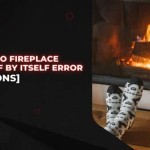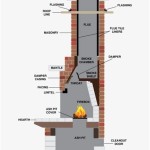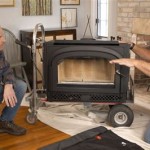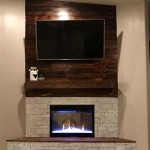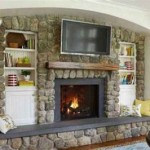Best Ventless Gas Fireplaces: A Comprehensive Guide
Ventless gas fireplaces, also known as vent-free gas fireplaces, offer a convenient and aesthetically pleasing heating solution for many homes. Unlike traditional fireplaces requiring chimneys or vents to expel combustion byproducts, ventless models are designed to burn gas so cleanly that minimal amounts of harmful gases are produced. These fireplaces are increasingly popular for their ease of installation, efficiency, and versatility in terms of placement within a home.
The selection of the "best" ventless gas fireplace depends significantly on individual needs, budget, and aesthetic preferences. This article explores key considerations when evaluating ventless gas fireplaces, providing insights into safety, functionality, and available options to assist potential buyers in making informed decisions.
Understanding the Safety Considerations of Ventless Gas Fireplaces
Safety is paramount when considering any gas-burning appliance, especially a ventless model. While manufacturers adhere to strict safety standards, understanding the mechanisms that make these fireplaces safe is crucial. Ventless gas fireplaces are designed to burn fuel completely, minimizing the production of carbon monoxide (CO), an odorless and dangerous gas. They achieve this through advanced burner technology and oxygen depletion sensors (ODS).
The ODS is a critical safety feature. It constantly monitors the oxygen levels in the room. If the oxygen level drops below a safe threshold, indicating incomplete combustion and a potential buildup of CO, the ODS automatically shuts off the gas supply to the fireplace. This effectively eliminates the risk of CO poisoning.
However, the presence of an ODS does not negate the need for prudent safety measures. It is essential to install and maintain a working carbon monoxide detector in the same room as the fireplace. Regular inspection and battery replacement are vital. Additionally, proper ventilation is still important, despite the “ventless” designation. While the fireplace doesn't require a chimney, allowing fresh air into the room helps to maintain optimal oxygen levels and minimize the potential for indoor air quality issues. Opening a window slightly can provide sufficient ventilation in most cases.
Furthermore, ventless gas fireplaces are designed for supplemental heating. They are not intended to be the primary heat source for an entire home. Overuse can lead to elevated humidity levels and potential air quality problems. Following the manufacturer's instructions regarding usage time and room size is crucial for safe and efficient operation.
Finally, it’s important to choose a ventless gas fireplace that is certified by a nationally recognized testing laboratory, such as CSA International or Underwriters Laboratories (UL). Certification indicates that the fireplace has been rigorously tested and meets established safety standards.
Factors to Consider When Choosing a Ventless Gas Fireplace
Selecting the right ventless gas fireplace involves several considerations, including heating capacity, aesthetics, fuel type, and installation requirements. Each factor plays a significant role in determining the suitability of a particular model for a specific application.
Heating Capacity: The heating capacity of a ventless gas fireplace is measured in British Thermal Units (BTUs). The appropriate BTU rating depends on the size of the room to be heated. A general guideline is that 5,000 BTUs can heat approximately 200 square feet. However, factors such as insulation, ceiling height, and climate can influence the required BTU output. Over-sizing the fireplace can lead to overheating and discomfort, while under-sizing will result in inadequate heating.
Aesthetics: Ventless gas fireplaces are available in a wide range of styles and designs, from traditional to contemporary. Options include log sets, glass media, and various finishing options. The aesthetic appeal of the fireplace should complement the existing décor of the room. Consider the visual impact of the fireplace both when it's in operation and when it's not. Some models offer remote controls for adjusting flame height and temperature, adding to their convenience and aesthetic appeal.
Fuel Type: Ventless gas fireplaces typically operate on either natural gas or liquid propane (LP). The choice of fuel depends on the availability and cost of each fuel source. Natural gas is generally less expensive than LP, but it requires a connection to a natural gas line. LP fireplaces require a propane tank, which needs to be refilled periodically. Convertibility between natural gas and LP may be possible on some models with a conversion kit, but this should be verified with the manufacturer.
Installation Requirements: While ventless gas fireplaces are relatively easy to install compared to vented models, proper installation is still essential for safety and optimal performance. It's crucial to follow the manufacturer's instructions carefully. Some models are designed for wall mounting, while others are freestanding or insert types that fit into existing fireplace openings. Ensure the fireplace is installed on a non-combustible surface and that there is adequate clearance from combustible materials. In some cases, professional installation may be recommended, particularly if gas line connections are involved.
Budget: Ventless gas fireplaces range in price from a few hundred dollars to several thousand dollars. The price depends on the size, features, and brand of the fireplace. It's important to establish a budget and research different options within that price range. Consider the long-term operating costs, including fuel consumption and maintenance, when evaluating the overall affordability of a ventless gas fireplace.
Features: Ventless gas fireplaces can come with a variety of features that enhance their convenience and functionality. These may include remote controls, thermostats, timers, and blower fans. Remote controls allow for easy adjustment of flame height and temperature. Thermostats maintain a consistent room temperature. Timers allow for pre-set operation schedules. Blower fans circulate heat more efficiently, improving the fireplace's heating effectiveness. The decision to prioritize these features is dependent on individual preferences and heating needs.
Exploring Different Types of Ventless Gas Fireplaces
The ventless gas fireplace market offers a diverse range of models, each catering to specific installation requirements and aesthetic preferences. Understanding the various types available can streamline the selection process.
Ventless Gas Fireplace Inserts: These are designed to be installed into existing fireplace openings. They offer a convenient way to convert a traditional wood-burning fireplace into a gas-burning unit without the need for extensive renovation. Ventless inserts typically include a log set and a decorative surround to enhance the fireplace's appearance.
Ventless Gas Fireplace Log Sets: Log sets are designed to be placed within an existing firebox. They typically consist of realistic-looking artificial logs and a burner system. Ventless log sets offer a simple and affordable way to add the ambiance of a fireplace to a room. They are available in a variety of sizes and styles to fit different firebox dimensions.
Ventless Gas Fireplace Stoves: These resemble traditional wood-burning stoves but operate on gas. They are freestanding units that can be placed anywhere in a room with access to a gas line or propane tank. Ventless gas stoves offer a rustic and charming aesthetic, and they are often more efficient than traditional fireplaces.
Ventless Gas Fireplace Wall-Mounted Units: These fireplaces are designed to be mounted directly on a wall. They are a good option for rooms with limited floor space. Wall-mounted ventless fireplaces are available in a variety of contemporary styles, and some models feature decorative glass or stone accents. These can serve as a focal point within a room, adding both warmth and visual appeal.
Ventless Gas Fireplace Tables: These combine the functionality of a coffee table with the ambiance of a fireplace. They typically feature a central fire pit surrounded by a tabletop surface. Ventless gas fireplace tables are ideal for outdoor spaces such as patios and decks. They provide warmth and create a cozy atmosphere for outdoor gatherings.
Each type of ventless gas fireplace has its own advantages and disadvantages. The best choice depends on the specific needs and preferences of the homeowner.
:max_bytes(150000):strip_icc()/ventless-gas-fireplaces-4160746-hero-f9d4bdcd9bd446eb84406de306f790ba.jpg?strip=all)
How To Pick Out A Ventless Gas Fireplace

Top 6 Ventless Gas Log Sets Woodlanddirect Com

The Best Indoor Ventless Fireplaces For Your Home Or Apartment

Considering A Ventless Gas Fireplace Here S What You Need To Know Bob Vila

Duluth Forge Dual Fuel Ventless Gas Fireplace 32 000 Btu T Stat Control Antique White Finish 170123 The Home Depot

Duluth Forge Dual Fuel Ventless Gasfireplace Insert 26 000 Btu T Stat Control Fdf300t 170121 The Home Depot

Considering A Ventless Gas Fireplace Here S What You Need To Know Bob Vila

Duluth Forge Dual Fuel Ventless Gasfireplace Insert 26 000 Btu T Stat Control Fdf300t Com

Duluth Forge Dual Fuel Ventless Gas Fireplace 26 000 Btu T Stat Control Antique White Finish 170130 The Home Depot

The Best Gas Log Sets For 2024 Fireplaces Direct Learning Center
Related Posts


